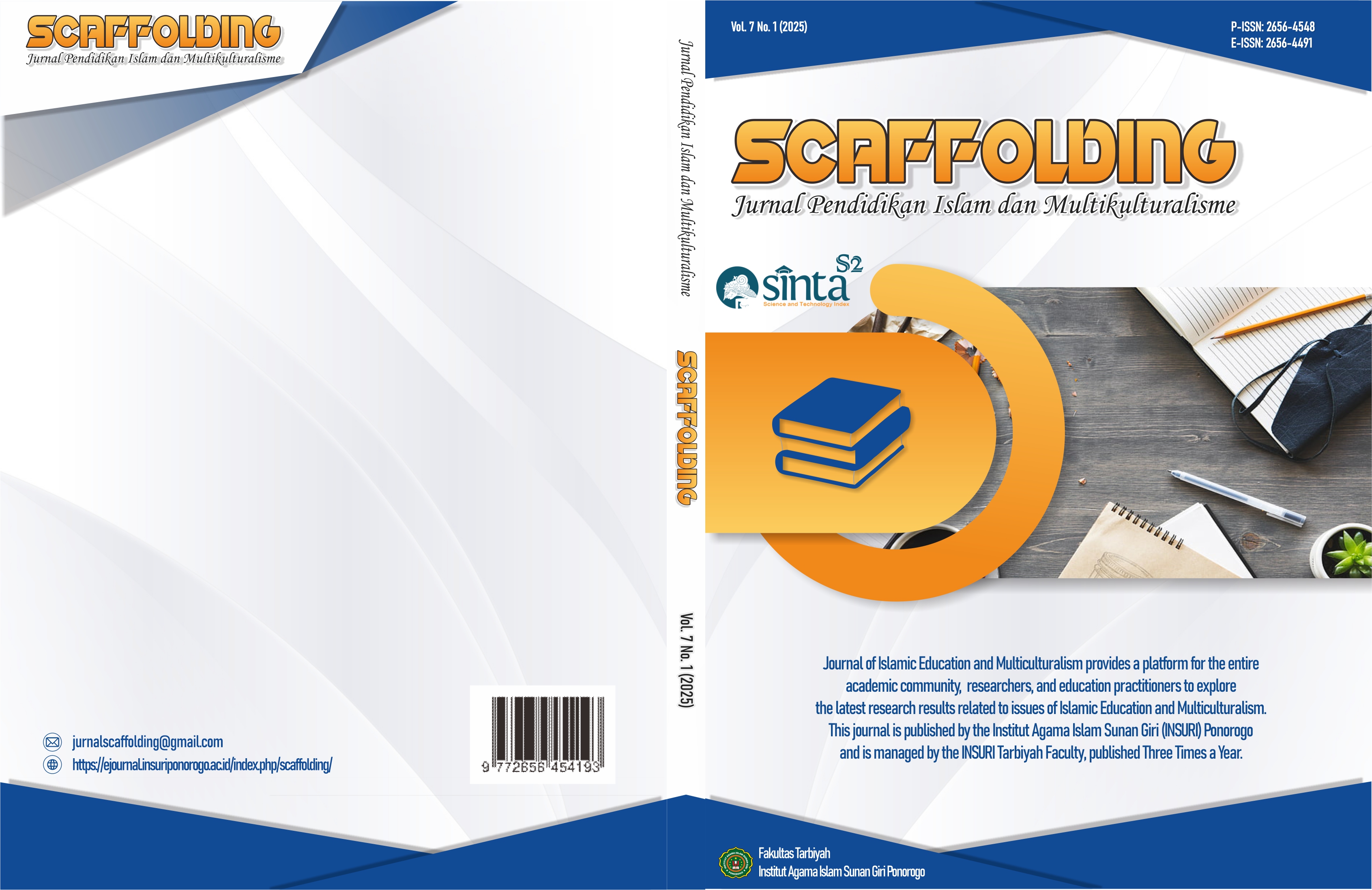Strengthening National Character Among Senior High School Students Through Islamic Religious Education in Tojo Una-Una Regency
DOI:
https://doi.org/10.37680/scaffolding.v7i1.7100Keywords:
National Character Development, Islamic Religious Education, Students, Senior High SchoolAbstract
This study aims to analyze the role of Islamic Religious Education (IRE) in strengthening the national character of Senior High School students in Tojo Una-Una Regency. This research employs a qualitative method with a multi-site approach. Data were collected through field observations, in-depth interviews with IRE teachers, school principals, and students, focus group discussions (FGDs), as well as document studies related to school activities. The data sources consist of primary and supporting informants relevant to the context of national character development. Data analysis was conducted through the stages of data reduction, data presentation, and drawing conclusions interactively. The findings reveal that IRE plays a strategic role in shaping students’ national character, which includes attitudes of mutual respect for differences, patriotism, and a sense of responsibility towards the nation. Islamic Religious Education functions not only as a vehicle for knowledge transmission but also as a medium for moral and ethical development aligned with Islamic values. Therefore, IRE serves as a fundamental pillar in safeguarding students from the negative impacts of globalization and in instilling national values in a sustainable manner.
Downloads
Published
Issue
Section
License
Copyright (c) 2025 Sagir Muhammad Amin, Sitti Nadirah, Idris Idris

This work is licensed under a Creative Commons Attribution-NonCommercial 4.0 International License.
Authors who publish with this journal agree to the following terms:
Authors retain copyright and grant the journal right of first publication with the work simultaneously licensed under a Creative Commons Attribution-NonCommercial 4.0 International License that allows others to share the work with an acknowledgement of the work's authorship and initial publication in this journal.
Authors are able to enter into separate, additional contractual arrangements for the non-exclusive distribution of the journal's published version of the work (e.g., post it to an institutional repository or publish it in a book), with an acknowledgement of its initial publication in this journal.
Authors are permitted and encouraged to post their work online (e.g., in institutional repositories or on their website) prior to and during the submission process, as it can lead to productive exchanges, as well as earlier and greater citation of published work.



